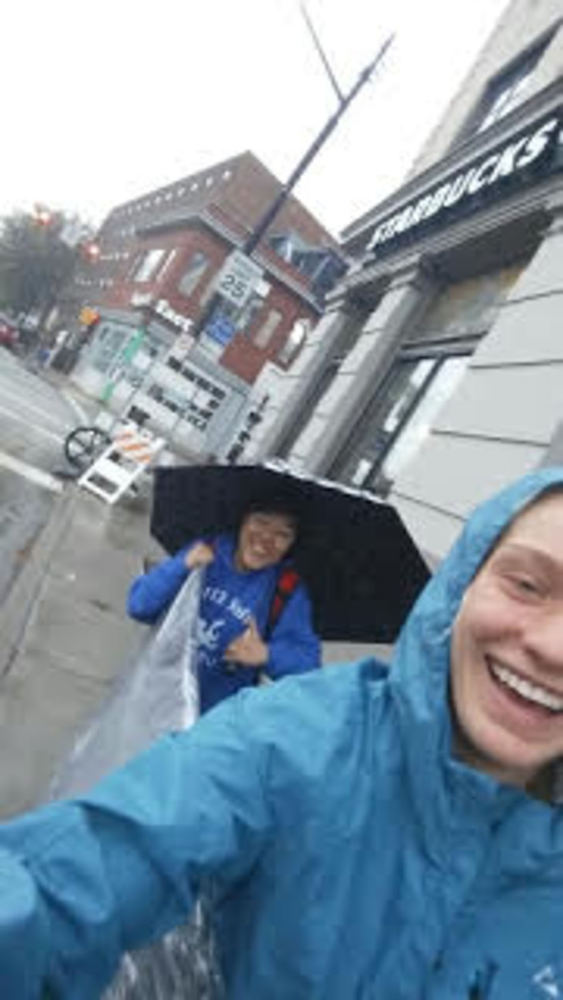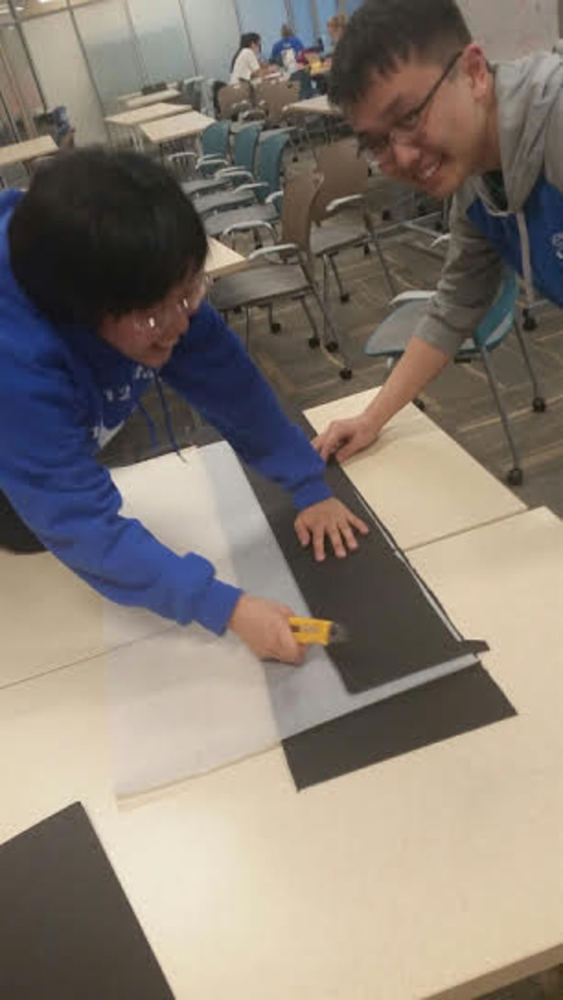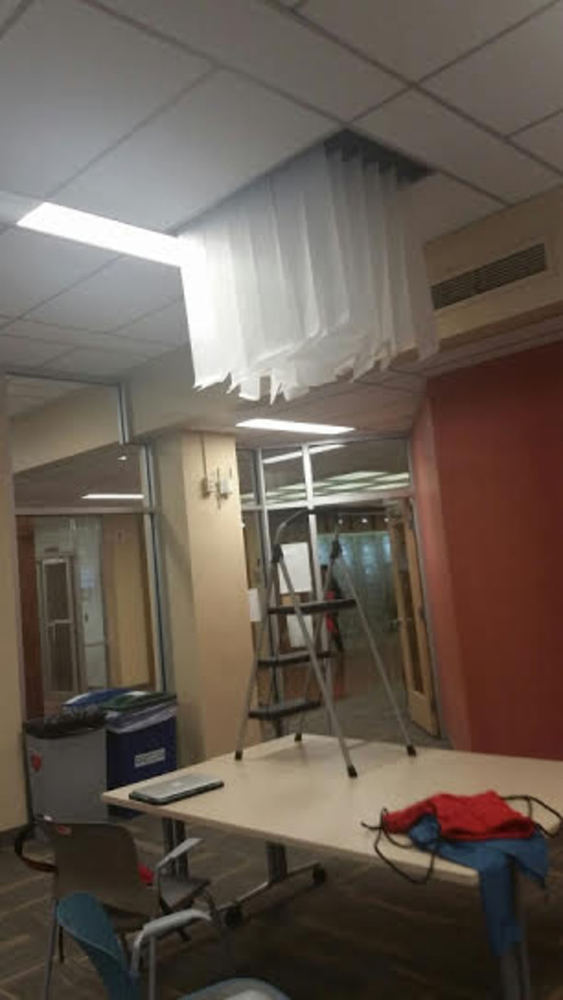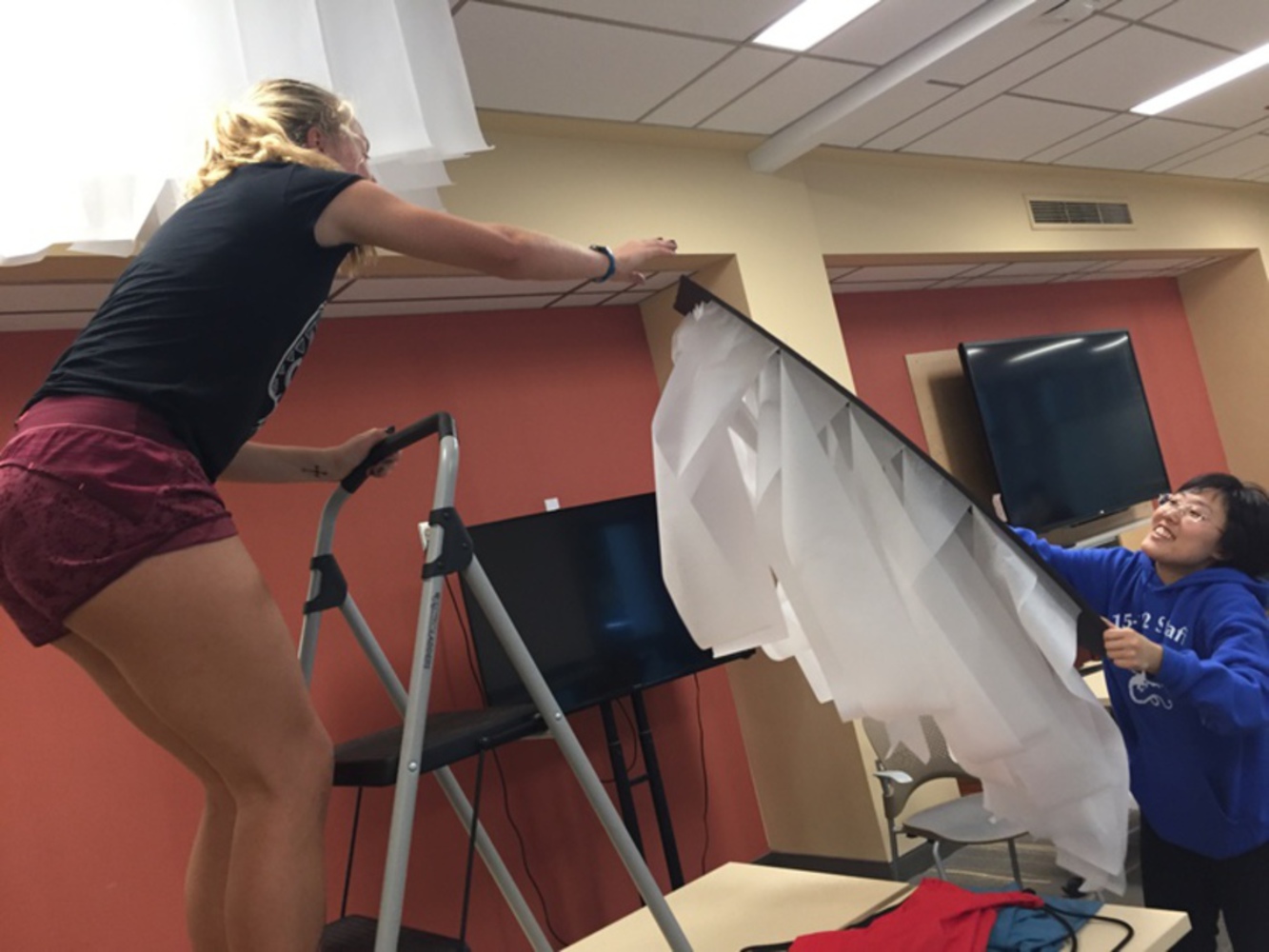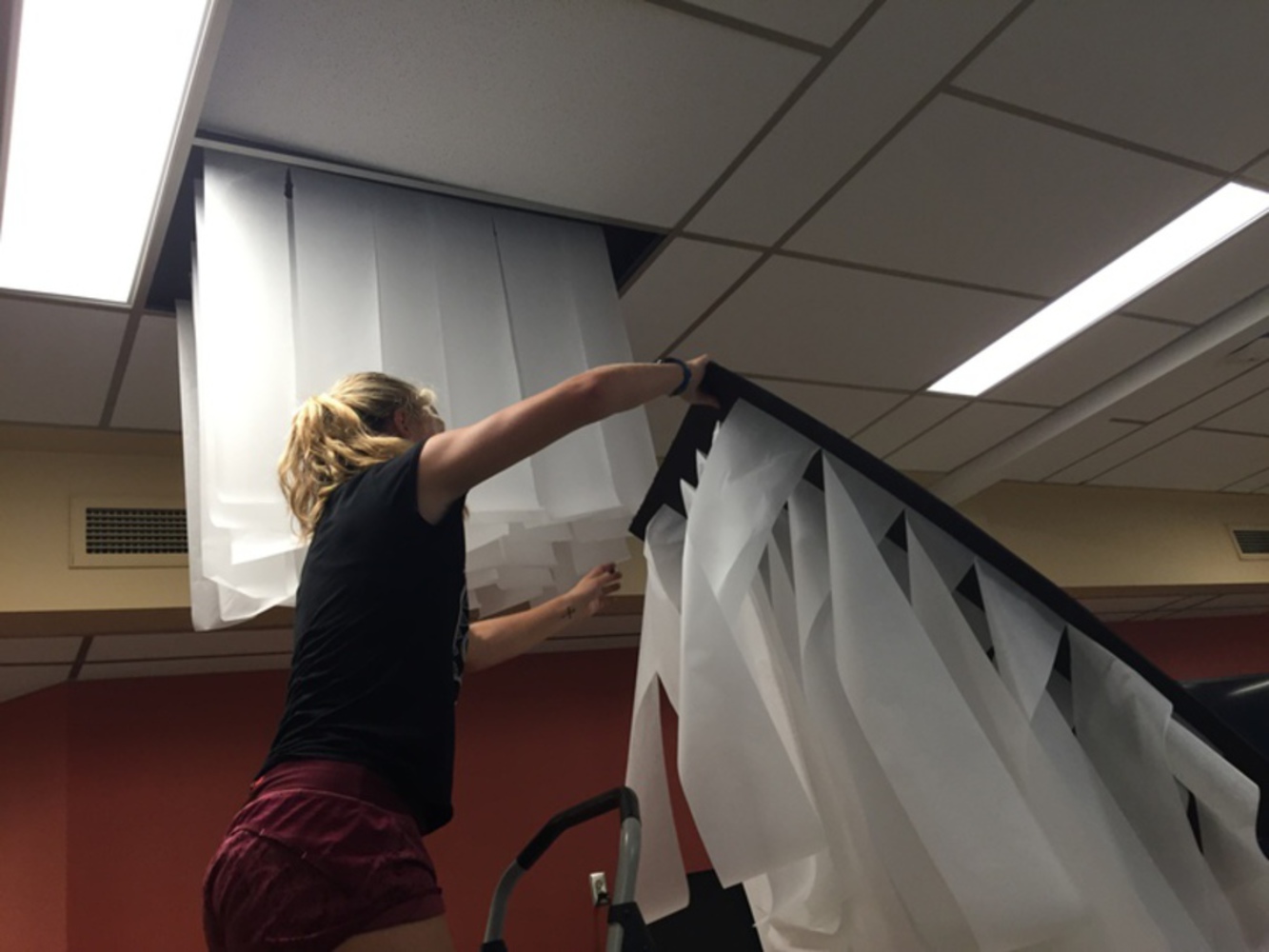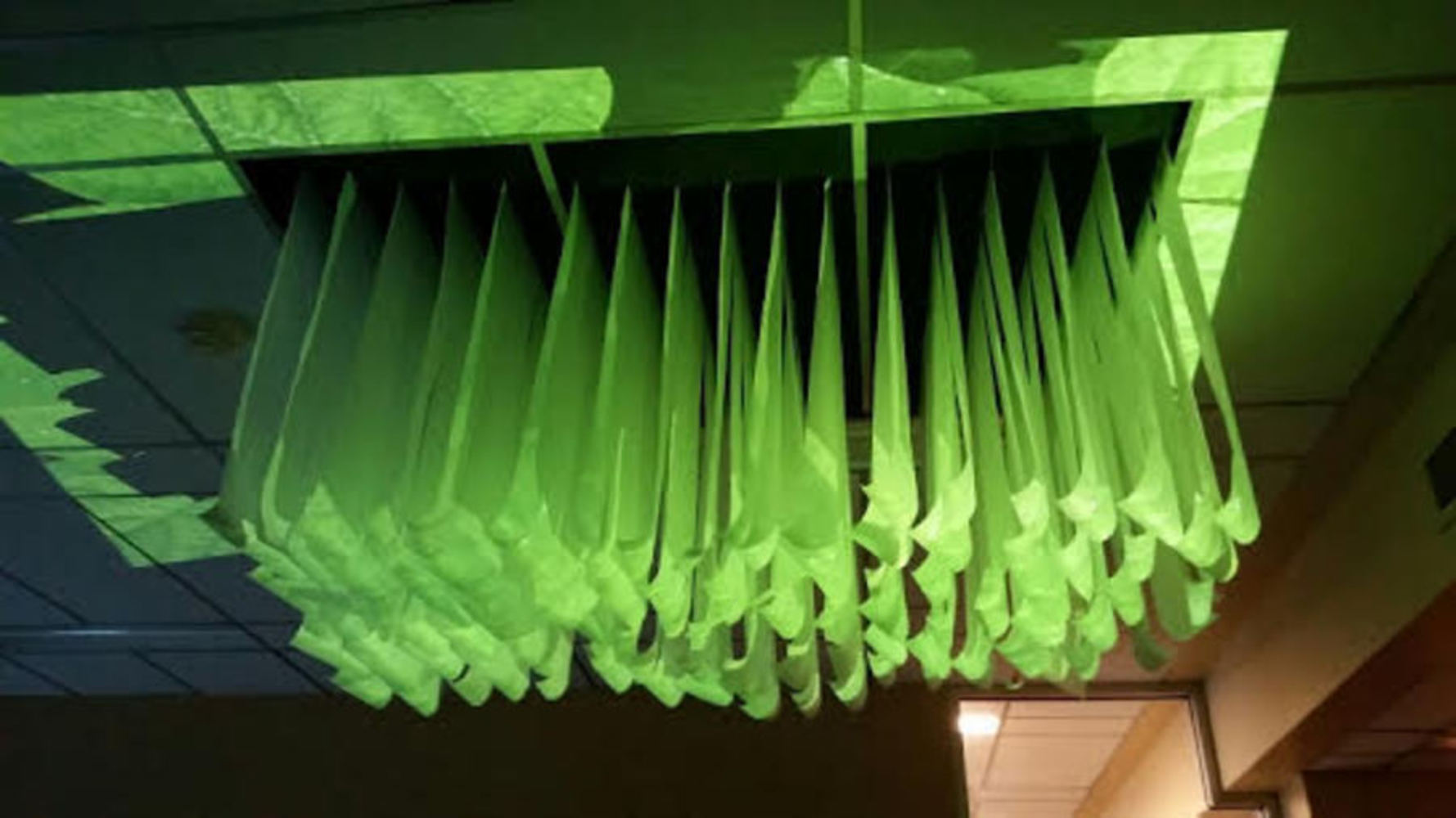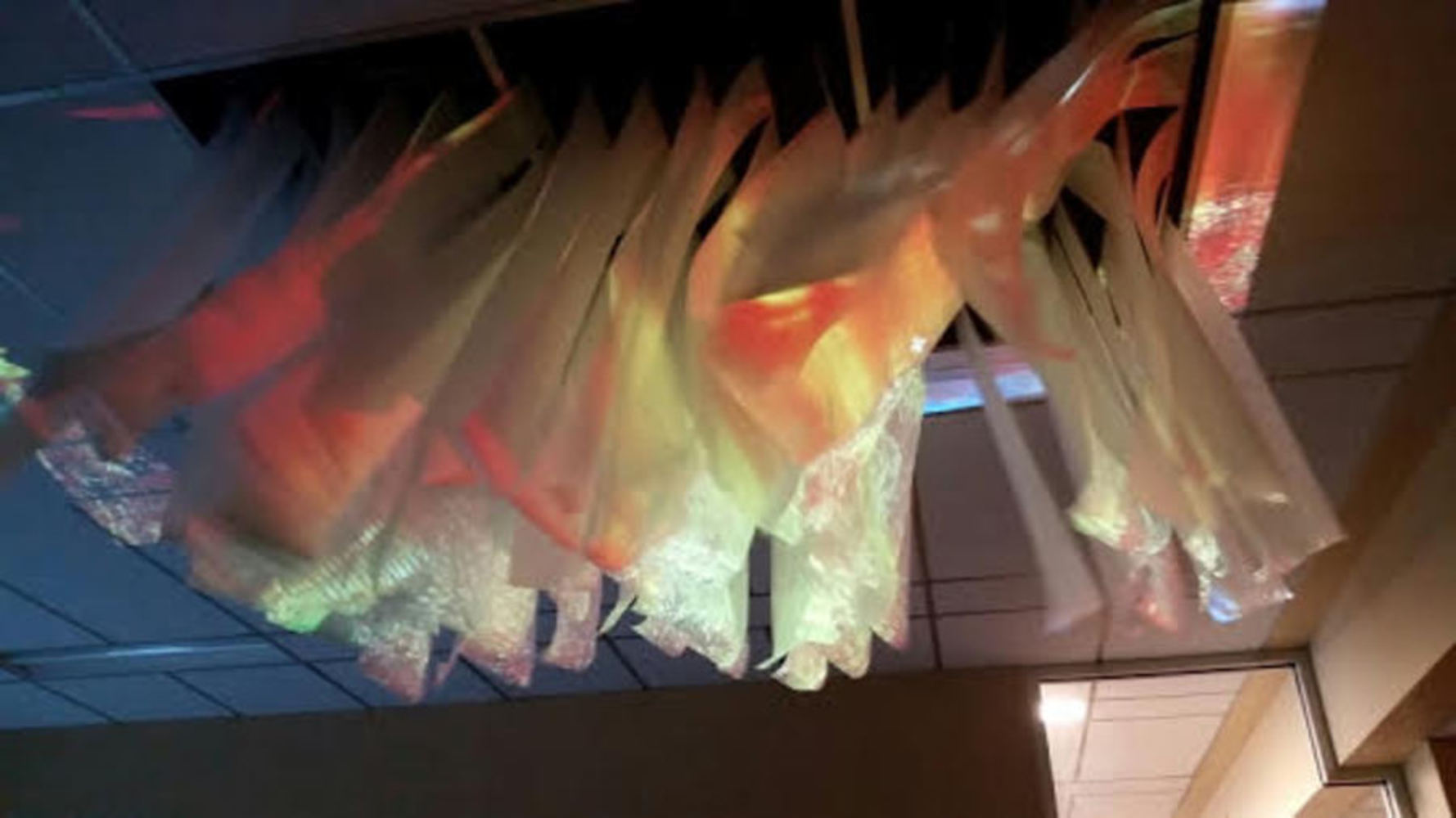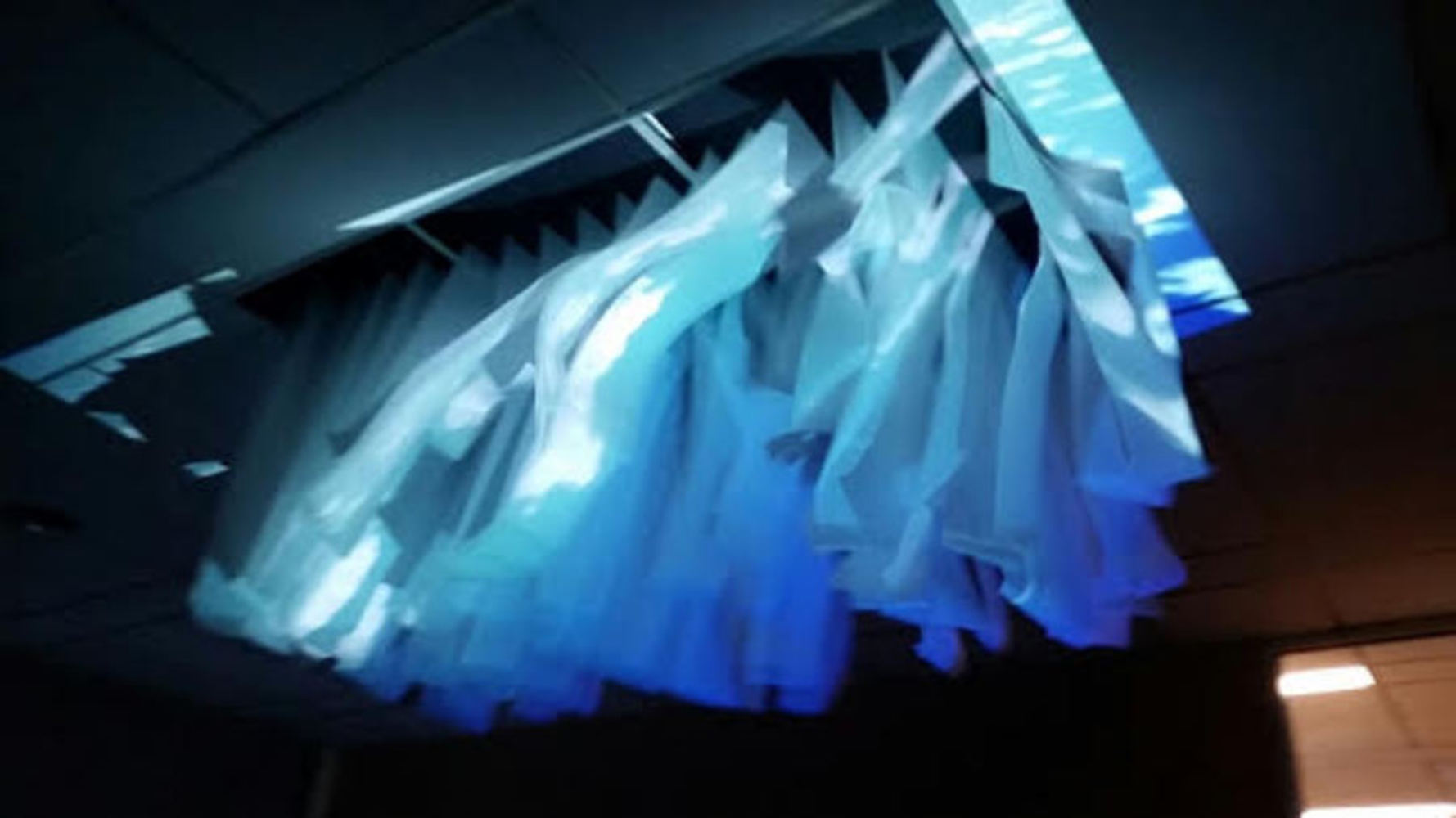Intention
The idea that we came up with is to cut paper into strips and suspend them from the ceiling. We would have them cut to different lengths, but not long enough to disrupt anyone's path. Then we would have a wind source, in this case the vent near the ceiling in Studio A, to blow air at the strips to make them look like waves. The last thing would be a light shining on the paper from a similar direction that the air is blowing to give the paper texture while it flowing.
The assigned material for our group is paper, and since it moves so easily we wanted to exploit that property so make kinetic art. The media portion of work comes from the projection that we used to give the paper strips texture. We decided to use textures found in nature such as a sunset, a cloudy blue sky, and green leaves.
As mentioned before, we chose the site for our installation to be in Studio A in front of the vent near the ceiling. We mounted our strips of paper on the two ceiling panels in front of the vent in order to have an already mounted wind source.
